Your cart is empty now.
A few preliminary remarks on the history, scope and contents of the Garuda Puranam may be necessary. The Garuda Puranam may be safely described similar work to the Agni Puranam. Each of them treats of Para Vidya and Apara vidya secular knowledge and metaphysical truths, and partakes more of the nature of a catechism of the then prevailing Brahmananism, or of what a Brahmana was required to know at the time, than of the Puranam proper, at least if we may be admitted to look upon the Ramayana or the Rules of Pancha Sandhis, etc., the Guruda Puranam like its sister work. Reflects but the knowledge of the Brahmanical world at the time and had it used then as is have even now.
Cakrapani Dutta has quoted many a recipe from it and the Visnu Dharmottaram, according to several eminent authorities, originally formed a portion of the Garuda Puranam. All these factors emphatically demonstrate the fact that the Garuda Puranam was in existence even prior the tenth century, of the Christian Era. On the Contrary, we have reasons to believe that hosts of Puranas and Upapuranas were composed in the age of Brahmanic reniscence, which immediately followed the overthrow of Buddhism in India. The Garuda Puranam, like the Agni, Siva, Padma, and other Puranas were the exponents of the victorious Brahmanism tried to tutelary deity of each sect with the attributes of supreme divinity or Brahman and to equip its members with the Vedic literature became a new school of law. Medicine and metaphysics etc. re-instating the old errors of the Vedic literature as if to ignore the many advanced truths and principles of the later day Buddhistic science and to confirm the victory of Brahmanism.
The description of the incidents of the life of Buddha, however meager and incidental it might be, and the occurrence of the name of Susruta in the medical portion of the Garuda Puranam leaves not the slightest doubt that its author was intimately acquainted with the Buddhistic literature of the age, both medical and Metaphysical. It is a settled fact of history that the Susruta Samhita, at least the recension of the Sasruta Samhita by the Buddhist Nagarjuna, was written in the second century before the birth of Christ. Now the Susruta Samhita says that the number of bones in the human body is three hundred. The Visnu Smriti (Institutes of Visnu) following the orthodox (Vedic) non- medical opinion on the subject gives it as three hundred sixty-six.
We know that Nagarjuna, the Buddhist redacter of the Susruta Samhita, mentioned in his recension of the work that there are " three hundred bones in the human organism but the follower of the Vedas say that their number is three hundred and sixty" which tallies with the number given in the Yajnavalkya Smrti. The author of the Garuda Puranam, whoever he might be must have been sufficiently familiar with the works of Nagarjuna and other Buddhistic Medical Acaryas so as to be fully convinced of the truth of their statement and attempted to make the Vedic number of skeletal bones as near to the truth as possible. This fact serves to throw a new light upon the date of the composition of the Brahmanism once more attempted to restore the teachings of the Vedas in their pristine glory and the truths of the Buddhistic science or metaphysics were still too potent a factor to be ignored or lightly dismissed a fact which support our contention and lends a plausible colour to the view we have adopted as regards the probable date of the composition of the Garuda Puranam.
In the first Chapter we learn that the Puranam consistes of eight thousand and eight hundred verses and the subjects dealt with therein are creations of the universe Pujas, holy pools and shrines. Cosmogony and Geography Ages Manus, Duties of differents social orders Gifts making Duties of kings etc. Laws Vratas Royal dynasties Vedagas, Pralaya Laws of Virtue desire and money and knowledge (of Brahman and external things). These then were the main themes that were originally dealt with in the Guruda Puranam and we may say that this was so in the light of the principle of Adhyaya sampravibhaga (classification of chapters) which forms one of the cardinal rules in forming the plan of a Sanskrit work. We regret to say that many things having a direct bearing thereon have been added to it. And within the compass of the eight thousand and eight hundred slokas, as laid down in the introductory chapter. Thus we see that the Pretakhanda or Visnu dharmottara, was added to it by way of an appendix and the reason of these successive accretions to the text can easily understood if we consider that the Garuda Puranam like the Agni etc. although originally a compendium of the available Brahmanical knowledge and rituals pursued and followed by the Vaisnava section of the community came to gather in many tributaries from the other branches of Brahmanic thought and religion as the distinction between the sects of Visnu and other sects Siva and Sakti etc., came to be less marked and pronounced off. Thus we see many Tantrik rites and Mantras such as the Tripura Vidya, Nityaklinna vidya were introduced into the Garuda Puranam.
From the Jacket
The different works known by the name of Puranas (or old) are evidently derived from the myth heroic stage of Hindu belief. The puranas are commonly stated to be eighteen in number. It is said there are also eighteen Upa-Puranas but the names of all these are not found. The principal eighteen Puranas are Brahma, Padma, Visnu, Siva, Bhagvata, Naradiya, Markandeya, Agni, Bhavisya, Brahma, Vaivarta, Linga, Varaha, Skanda, Vamana, Kurma, Matsya, Garuda and Brahmanda.
All these Puranas are classed into three groups according to the qualities, which prevail in them. The matsya Purana remarks that those in which glory of Hari or Visnu prevails are Sattvika those in which the legends of Agni of Siva predominated are Tamasa and those which dwell most on the stories of Brahma are Rajasa.
The Garuda Puranam is a Vaisnava Purana and hence can be termed as Sattvika Purana. It is enumerated in all the lists available in the Puranas though these are not very ancient yet they show the popularity of the Garuda Purana in the Puranic literature. Also the authors of Dharmasastric digests and philosophical works quote extensively from the Garuda Purana thus it holds a unique place among the Puranas.
The present English translation by M. N. Dutt translated into English many Puranas and the Garuda Purana was one of them. It was first published in the year 108. Then it was reprinted. Now publishing its English translation with Sanskrit Verses. It is a medium size Purana consisting eight thousand verses. According to M. N. Dutt the book comprise three Samhitas viz the Agastya Samhita the Brhaspati Samhita ( Nitisara) and the Dhanvantari Samhita. Each one of those Samhitas would give it a permanent value and accord to it an undying fame among the works of practical ethics or Applied medicine. The Agastya Samhita deals with the names of the countries from which our fore fathers used to collect these gems the cutting polishing setting and apprecising etc. of the several kind of jems and dimond as they were practised in ancient in India cannot but be interesting to artists and ay men and the scientific traders unbedded in the highly poetic accounts of these original gems.
With the publication of this important purana alongwith English translation from a rare book by Dr. M. N. Dutt will help the scholars and the devotees as well.
| Preface to the Edition | v | |
| Preface | xiii | |
| Chapter I | Discourse between Suta and Saunaka and other Rsis in the forest of Naimisa Suta promises to narrate the Garuda Puranam | 1 |
| Chapter II | Sources of the Garuda Puranam- Visnu charges Garuda to compose the Garuda Puranam | 4 |
| Chapter III | Suta describes the subjects dealt with in the Garuda Puranam | 8 |
| Chapter IV | Order of Universal creation described by Narayana to Rudra | 9 |
| Chapter V | Creation of the Prajapatis. The Progeny of Daksa described | 11 |
| Chapter VI | Re- incarnation of Daksa in the form of Prachetas - Origin of the different races of men the progeny of Kasyapa described | 14 |
| Chapter VII | Description of the sun-worship etc. as performed by the Swayambhu Manu. | 18 |
| Chapter VIII | Description of the mode of worshiping Visnu | 20 |
| Chapter IX | The mode of spiritual initiation | 21 |
| Chapter X | The mode of worshipping the goddess Laksmi | 22 |
| Chapter XI | Description of the Nava- Vyuha form of worship | 23 |
| Chapter XII | Description of the order to be observed in the course of worship | 26 |
| Chapter XIII | The prayer of Visnu Panjaram | 28 |
| Chapter XIV | A brief discourse on Yoga | 30 |
| Chapter XV | Enumeration of one thousand epithets of Visnu | 31 |
| Chapter XVI | Description of the mode of meditation on Visnu as well as of the rite of sun worship | 41 |
| Chapter XVII | Description of another form of sun worship | 43 |
| Chapter XVIII | Mode of worshipping the death conquering deity (Mrtyunjaya) | 44 |
| Chapter XIX | The Garudi Vidya which is the cure for all kinds of snake bite | 45 |
| Chapter XX | Mantra-cure (curative formulas) of snake bite as narrated by Siva | 48 |
| Chapter XXI | Mode of worshipping the Pancavaktra (five faced) manifestation of Siva | 50 |
| Chapter XXII | The mode of worshipping Siva | 50 |
| Chapter XXIII | Description of another form the Siva worship | 52 |
| Chapter XXIV | The worship of Ganapati | 55 |
| Chapter XXV | Sandal- worship Paduka puja described | 56 |
| Chapter XXVI | The mode of performing the rites of Kara- nyasa (location of the energies of different divities in the different limbs by a votary by dint of occult and psychic force) | 56 |
| Chapter XXVII | Rites for neutralizing the effects of snake venoms | 57 |
| Chapter XXVIII | The mode of worshipping the Gopala manifestation of Visnu | 58 |
| Chapter XXIX | Mantras to be used in connection with the worship of Sridhara manifestation of Visnu | 59 |
| Chapter XXX | Elaborate description of the mode of worship the Sridhara manifestation of Vishnu | 60 |
| Chapter XXXI | Description of other forms of Visnu worship | 62 |
| Chapter XXXII | Adoration of the five fundamental principles of the universe | 66 |
| Chapter XXXIII | Worship of the divine discs (Sudarsnam) | 69 |
| Chapter XXXIV | Hayagriva worship | 70 |
| Chapter XXXV | The mode of worshipping the Hayagriva manifestation of Visnu | 74 |
| Chapter XXXVI | Mode of performing the rite of Gayatri Nyasa | 75 |
| Chapter XXXVII | Description of the glories of Gayatri | 76 |
| Chapter XXXVIII | The mode of worshipping the deities, Durga, etc. | 77 |
| Chapter XXXIX | Description of other form of sun worship | 80 |
| Chapter XL | Mahesvara worship | 82 |
| Chapter XLI | Enumeration of diverse incantation Mantras (Nama Vidya) | 85 |
| Chapter XLII | Description of investing a phallic emblem with sacred thread (Siva- pavitrarohanam) | 85 |
| Chapter XLIII | Description of the rite of investing an image of Visnu with the holy thread (Visnu- pavitrarohanam) | 87 |
| Chapter XLIV | Contemplation of embodied God | 90 |
| Chapter XLV | Characteristic marks of Salagrama Stones | 92 |
| Chapter XLVI | Adoration of the deity presiding over homesteads (Vastu) | 94 |
| Chapter XLVII | Essential fetures presiding temple or of a place | 97 |
| Chapter XLVIII | Installations of Divine images | 100 |
| Chapter XLIX | Discourses on Yoga and acts of piety | 107 |
| Chapter L | Discourse on Yoga and gift makings, etc | 110 |
| Chapter LI | Donations | 116 |
| Chapter LII | Regulations of Prayascittas (penitential rites) | 119 |
| Chapter LIII | Traits of conduct of men marked by the several kinds of Nidhis | 121 |
| Chapter LIV | Progeny of Priya Vrata and incidental description of the seven Islands of the Earth | 122 |
| Chapter LV | Description of the Geographical situations of the different countries | 123 |
| Chapter LVI | Enumeration of the names of princes of the continent of Plaksa etc. | 124 |
| Chapter LVII | Cosmogeny of Hell and the neither regions | 126 |
| Chapter LVIII | Positions and dimensions of the sun and other planets | 126 |
| Chapter LIX | Discourses on Astrology presiding deities of the different planets and constellations of stars, situations of Yoginis on the different days of the fortnight etc. | 129 |
| Chapter LX | Discourses on the period of influence of the different planets with that of the sun | 133 |
| Chapter LXI | Influences of the moon in her different mansions | 134 |
| Chapter LXII | Discourses of Lagnamana and determination of what one ought or ought not to do from the stable or mobile character of the Langa | 136 |
| Chapter LXIII | A brief discourse on the auspicious and inauspicious marks on the persons of males | 137 |
| Chapter LXIV | A brief discourse on the auspicious or in auspicious marks on the person of females | 138 |
| Chapter LXV | Auspicious marks on men and women as disclosed by the science of Samudrikam | 140 |
| Chapter LXVI | Description of the specific marks of Sala-grama, description of Tirthas and of sixty countries such as Prabhasa | 148 |
| Chapter LXVII | The science of Pavana Vijaya (conquest of breath) and auguring bad of evil from the direction of the breath wind | 150 |
| Chapter LXVIII | (Agastya Samhita) Description of the origin of gems in the treatise on Ratna Pariksa (test of gems) by the holy Agastya | 153 |
| Chapter LXIX | Tests of Pearls | 157 |
| Chapter LXX | Tests of Ruby | 162 |
| Chapter LXXI | Tests of Emerald | 165 |
| Chapter LXXII | Tests of Sapphires | 167 |
| Chapter LXXIII | Tests of Lapis Lazuli (Vaidurya) | 169 |
| Chapter LXXIV | Tests of topas (puspa-raga) | 171 |
| Chapter LXXV | Tests of Karketana | 171 |
| Chapter LXXVI | Test of Bhisma -stone | 172 |
| Chapter LXXVII | Tests of Pulaka stones | 173 |
| Chapter LXXVIII | Test of blood stone | 174 |
| Chapter LXXIX | Tests of crystals | 174 |
| Chapter LXXX | Tests of Corals | 175 |
| Chapter LXXXI | A brief description of holy pools and sanctuaries | 175 |
| Chapter LXXXII | Description of the sanctity of Gaya and its early history | 178 |
| Chapter LXXXIII | Description of different rite to be performed at different | 180 |
| Chapter LXXXIV | Ablutions in the river Phalgu merit of masing offerings of funeral cakes at Rudra. History of king Visala | 187 |
| Chapter LXXXV | Merit of offering funeral cakes at Pretasila in Gaya | 191 |
| Chapter LXXXVI | Merit of performing Sraddhas at Preta Sila | 193 |
| Chapter LXXXVII | Enumeration of the names of fourteen Manus and of the Devas and Saptarsis. | 196 |
| Chapter LXXXVIII | Annals of Ruci incidentally narrated in the discourse between Markandeya and Kraustika | 201 |
| Chapter LXXXIX | Ruci hymnises the Pitris who in their turn grant him a boon | 203 |
| Chapter XC | Marriage of Ruci and birth of Raucya Manu | 211 |
| Chapter XCI | Contemplation of Hari | 211 |
| Chapter XCII | Contemplation of Hari and its process | 213 |
| Chapter XCIII | Laws of virtue as promulgated by the holy Yajnavalkya | 215 |
| Chapter XCIV | Initiation with the holy thread the study of the Vedas | 216 |
| Chapter XCV | Duties of house holders | 219 |
| Chapter XCVI | Origin of mixed castes the grat Yajnas Sandhya rites duties of house holders and members of different castes | 222 |
| Chapter XCVII | Purifications of Metalled articles | 229 |
| Chapter XCVIII | Gift making and Charity | 230 |
| Chapter XCIX | Mode of performing Sraddhas | 232 |
| Chapter C | Worship of Vinayakas Durga | 236 |
| Chapter CI | Propitiation of malignant Planets | 237 |
| Chapter CII | Duties of the order of forest dwelling hermits | 239 |
| Chapter CIII | Duties of Yatis | 239 |
| Chapter CIV | Signs of sinful souls | 240 |
| Chapter CV | Rites of atonement (Prayaschitta) | 241 |
| Chapter CVI | Impurities and Purities | 247 |
| Chapter CVII | A synopsis of the Dharma Sastra by Parasara | 250 |
| Chapter CVIII | Synopsis of rules of conduct | 254 |
| Chapter CIX | Advice on thrift and economy in the Nitisara | 256 |
| Chapter CX | Advice as to the non-rejectment of certain goods | 261 |
| Chapter CXI | Commendable traits in kings etc. (in the Nitisara) | 264 |
| Chapter CXII | Commendable traits in servants (in the Nitisara) | 267 |
| Chapter CXIII | Injunctions as to the appointments of the honest and the erudite in the king's service etc. | 269 |
| Chapter CXIV | Injunctions as to the distinction of friends and enemies (in the Nitisara) | 274 |
| Chapter CXV | Counsels by Shaunaka on forswearing bad wives etc. (End of the Brihaspati Samhita) | 280 |
| Chapter CXVI | Enumeration of the names of Vratas (vows and penances) commenced | 287 |
| Chapter CXVII | The Ananga trayodasi Vratam | 288 |
| Chapter CXVIII | The Akhanda Dvadasi Vratam | 289 |
| Chapter CXIX | Agastyatritiya Vratam | 290 |
| Chapter CXX | The Rambha Trtiya Vratam | 291 |
| Chapter CXXI | The Caturmasyam Vratam | 292 |
| Chapter CXXII | The Masopavasa Vratam | 293 |
| Chapter CXXIII | Kartika Vratas | 294 |
| Chapter CXXIV | The Siva Ratra Vratam | 295 |
| Chapter CXXV | The Ekadasi Vratam | 297 |
| Chapter CXXVI | Visvedeva Puja | 298 |
| Chapter CXXVII | Bhaimi Ekadasi and Dvadasi Vratam | 299 |
| Chapter CXXVIII | Various Vratas described | 300 |
| Chapter CXXIX | The Pratipad Vratas | 302 |
| Chapter CXXX | Marica Saptipad Vratas | 305 |
| Chapter CXXXI | Rohini Astami Vratas etc | 306 |
| Chapter CXXXII | The Sadgati Vratam etc | 308 |
| Chapter CXXXIII | Asokastami Vratas etc | 310 |
| Chapter CXXXIV | Maha Kausika Vratas etc | 312 |
| Chapter CXXXV | The Viranavami Vratas etc | 313 |
| Chapter CXXXVI | The Sravana Dvadasi Vratas etc | 313 |
| Chapter CXXXVII | The Damanaka Tryodasi Vratas | 314 |
| Chapter CXXXVIII | Genealogy of royal princes (solar race) | 316 |
| Chapter CXXXIX | Genealogy of the princes of the lunar race | 320 |
| Chapter CXL | Description of the race of puru | 325 |
| Chapter CXLI | descriptions of kings who came after Janamejaya | 328 |
| Chapter CXLII | Incarnations of Visnu and the glory of nuptial fidelity of Sita Described | 330 |
| Chapter CXLIII | The Ramayana, | 332 |
| Chapter CXLIV | Description of the Harivamsa | 336 |
| Chapter CXLV | The Mahabharatam | 337 |
| THE DHANVANTARI SAMHITA | ||
| Chapter CXLVI | Description of the Nidanam of all the diseases | 341 |
| Chapter CXLVII | The Nidanam of Fever | 343 |
| Chapter CXLVIII | The Nidanam of Raktapittam (Haemorrhage) | 351 |
| CXLIX | The Nidanam of Cough | 352 |
| Chapter CL | The Nidanam dyspaksea | 354 |
| Chapter CLI | The Nidanam of Hic Cough | 356 |
| Chapter CLII | The Nidanam of pulmonary consumption | 352 |
| Chapter CLIII | The Nidanam of Aversion of food | 359 |
| Chapter CLIV | The Nidanam of heart disease | 361 |
| Chapter CLV | The Nidanam of diseases resulting from the excess or abuse of wine | 363 |
| Chapter CLVI | The Nidanam of Haemorrhoids | 366 |
| Chapter CLVII | The Nidanam of Dysentry | 370 |
| Chapter CLVIII | The Nidanam of Stangury etc | 373 |
| Chapter CLIX | The Nidanam of diseases of the Urinary organs (Pramehas) | 376 |
| Chapter CLX | The Nidanam of abscesses etc | 380 |
| Chapter CLXI | The Nidanam of Ascited etc | 386 |
| Chapter CLXII | The Nidanam of Chorosis | 390 |
| Chapter CLXIII | The Nidanam of Erysipelas | 393 |
| Chapter CLXIV | The Nidanam of cutaneous affections (Kusthas) | 396 |
| Chapter CLXV | The Nidanam of Bodily parasites | 400 |
| Chapter CLXVI | The Nidanam of diseases of the nervous system | 401 |
| Chapter CLXVII | The Nidanam of Vata Raktam | 406 |
| Chapter CLXVIII | The Nidanam of Mukha roga | 409 |
| Chapter CLXIX | The Nidanam of diseases of the ears | 413 |
| Chapter CLXX | The Nidanam of diseases of the nose | 418 |
| Chapter CLXXI | The Nidanam of diseases of the eyes | 424 |
| Chapter CLXXII | The Nidanam of diseases of the head | 429 |
| Chapter CLXXIII | The Nidanam of diseases of the female reproductive organs | 433 |
| Chapter CLXXIV | The Nidanam of difficult labour | 436 |
| Chapter CLXXV | The Nidanam, of diseases peculiar to parturient women | 437 |
| Chapter CLXXVI | The Nidanam of diseases peculiar to peculiar to infant life | 439 |
| Chapter CLXXVII | The Nidanam of Syphilis | 440 |
| Chapter CLXXVIII | The Nidanam of Variola | 447 |
| Chapter CLXXIX | The Nidanam of minor affections | 449 |
| Chapter CLXXX | The Nidanam of Fistual in Anas, etc. | 450 |
| Chapter CLXXXI | The Nidanam of poisons | 451 |
| Chapter CLXXXII | The Nidanam of Goitre scrofula and glandular swellings | 452 |
| Chapter CLXXXIII | The Nidanam of Vomiting | 454 |
| Chapter CLXXXIV | The Nidanam of Urticaria | 456 |
| Chapter CLXXXV | The Nidanam of Sula neuralgic pain etc | 459 |
| Chapter CLXXXVI | The Nidanam of aphonia | 462 |
| Chapter CLXXXVII | The Nidanam of Udavarta | 463 |
| Chapter CLXXXVIII | The Nidanam of traumatic ulcers etc | 464 |
| CLXXXIX | The Nidanam of Sarira Vranas (idiopathic ulcers) | 465 |
| Chapter CXC | The Nidanam of fractures | 467 |
| Chapter CXCI | Medicinal recipes of inffalible effcacies | 469 |
| Chapter CXCII | Medical treatment of fever etc | 471 |
| Chapter CXCIII | Medical treatments of Sinus etc | 474 |
| Chapter CXCIV | Visnu Kavacha | 475 |
| Chapter CXCV | Fulfilment of deceses in senenvisgod's | 478 |
| Chapter CXCVI | Visnudhara | 479 |
| Chapter CXCVII | Various medicinal compounds disclosed by Hari to Garuda | 480 |
| Chapter CXCVIII | Eulogy of Tripura | 484 |
| Chapter CXCIX | The syantwdhava | 485 |
| Chapter CC | The same continued | 488 |
| Chapter CCI | The same continued | 489 |
| Chapter CCII | The same continued | 492 |
| Chapter CCIII | The same continued | 494 |
| Chapter CCIV | The same continued | 495 |
| Chapter CCV | Grammar | 501 |
| Chapter CCVI | Grammar | 504 |
| Chapter CCVII | Prosody | 506 |
| Chapter CCVIII | Prosody | 506 |
| Chapter CCIX | Prosody | 508 |
| Chapter CCX | The same continued | 511 |
| Chapter CCXI | Prosody | 512 |
| Chapter CCXII | Prosody | 512 |
| Chapter CCXIII | Dharmashatra | 513 |
| Chapter CCXIV | Dharmashastra | 525 |
| Chapter CCXV | Dharmashatra | 528 |
| Chapter CCXVI | Dharmashatra | 531 |
| Chapter CCXVII | Dharmashatra | 531 |
| Chapter CCXVIII | Dharmashatra | 533 |
| Chapter CCXIX | Dharmashatra | 539 |
| Chapter CCXX | Dharmashatra | 541 |
| Chapter CCXXI | Dharmashatra | 543 |
| Chapter CCXXII | The Prayaschittas | 545 |
| Chapter CCXXIII | Yuga Dharma | 551 |
| Chapter CCXXIV | Dissolution | 554 |
| Chapter CCXXV | Result of karma | 555 |
| Chapter CCXXVI | Yoga | 558 |
| Chapter CCXXVII | Yoga | 562 |
| Chapter CCXXVIII | Devotion to Visnu | 565 |
| Chapter CCXXIX | Devotion to Visnu | 566 |
| Chapter CCXXX | Devotion to Visnu | 567 |
| Chapter CCXXXI | Hymn to Narasingh | 571 |
| Chapter CCXXXII | Meditation to God | 574 |
| Chapter CCXXXIII | Mrtyavastaka Hymn | 576 |
| Chapter CCXXXIV | Chakradhara Hymn | 577 |
| Chapter CCXXXV | Vedanta and Samhkya knowledge of Brahman | 582 |
| Chapter CCXXXVI | Vedanta and Samhkya | 586 |
| Chapter CCXXXVII | Essence of Gita | 588 |
| Chapter CCXXXVIII | Essence of Gita | 589 |
| Chapter CCXXXIX | Brahma Gita | 591 |
| Chapter CCXL | The eight essentials of Yoga etc,. the merit that may be acquired by hearing the narration of the Garuda Puranam etc. | 593 |
| 1 | Garuda's query | 655 |
| 2 | Results of actions | 660 |
| 3 | Description of Hell | 666 |
| 4 | Pre-death and post-death rites | 672 |
| 5 | Annual rites for the deceased | 684 |
| 6 | The glory of Vrsotsarga | 693 |
| 7 | The story of five ghosts | 703 |
| 8 | Person authorised to perform obsequies | 709 |
| 9 | The king authorised to perform rites | 711 |
| 10 | The Gratifying Nature of Sraddha | 716 |
| 11 | Doors for Departure | 722 |
| 12 | Importance of Dharma | 723 |
| 13 | Obsequial Rites | 725 |
| 14 | Merits of Gifts | 727 |
| 15 | Observances immediate after Death | 731 |
| 16 | Life after Death | 738 |
| 17 | Glory of Sravanas | 741 |
| 18 | Life after Death | 743 |
| 19 | Ghosts and their Release | 746 |
| 20 | Functions of the Departed soul | 748 |
| 21 | Ghosts and Their Release | 751 |
| 22 | On attaining Ghosthood | 753 |
| 23 | On Ghosthood | 759 |
| 24 | Sins of Omission and Commission Premature death of Children; Gifts | 760 |
| 25 | On sons and grandsons | 763 |
| 26 | On the rite of uniting the dead with the deceased ancestors | 766 |
| 27 | Episode of King Babhruvhana | 771 |
| 28 | Gifts for the Ghost | 776 |
| 29 | Rites after death | 778 |
| 30 | On bestowing Gifts | 781 |
| 31 | On bestowing Gifts | 784 |
| 32 | The Origin of life | 787 |
| 33 | The world of Yama | 796 |
| 34 | Results of Virtue and Sin | 898 |
| 35 | Rites of Sapindikarana and Sraddha | 808 |
| 36 | On fast and pilgrimage | 811 |
| 37 | Gift of a Vessel filled with water | 814 |
| 38 | On Salvation Heaven Gifts, Pilgrimage and good deeds | 815 |
| 39 | Rules of impurity | 818 |
| 40 | On accidental death | 819 |
| 41 | Releasing the Bull(Vrsotsarga) | 824 |
| 42 | On bestowing gifts | 825 |
| 43 | On performing a Sraddha | 826 |
| 44 | On accidental death | 827 |
| 45 | The mode of annual Sraddha | 829 |
| 46 | Results of activity | 831 |
| 47 | On Sins and Vaitarani | 834 |
| 48 | On Dharma and Adharma | 837 |
| 49 | Method of Final Release | 842 |
| 1 | Classification of the Puranas. The Nature of Deities | 855 |
| 2 | Puranic Trinity: Brahma, Visnu, Siva: Their respective roles | 863 |
| 3 | Creation of the universe: Variation due to Equilibrium | 869 |
| 4 | Gunas and their nature: Imbalance and Equilibrium | 874 |
| 5 | Deities and their relative status | 878 |
| 6 | Deities and their relative status | 882 |
| 7 | Praise of Lord Visnu by deities and sages | 888 |
| 8 | Praise of Lord Visnu by deities and sages | 895 |
| 9 | Nature of deities and the serial order of their position | 896 |
| 10 | Creation primary and secondary | 898 |
| 11 | Causes of Ignorance | 902 |
| 12 | Praise of Visnu by Brahma | 905 |
| 13 | Creation of deities after dissolution | 913 |
| 14 | Nature and form of Visnu and benefits of Vaisvadeva | 916 |
| 15 | Incarnations of Visnu | 920 |
| 16 | Incarnations of Mahalaksmi | 923 |
| 17 | Forms of Bharati in different births | 929 |
| 18 | Incarnations of Rudra and after | 932 |
| 19 | The Episode of Nila | 939 |
| 20 | The Episode of Bhadra | 945 |
| 21 | The Episode of Kalindi | 950 |
| 22 | The Episode of Laksmana | 953 |
| 23 | The Episode of Jambavati | 959 |
| 24 | The glory of Venkatacala and lord Srinivasa | 964 |
| 25 | Glory of Venkatesa and the method of worship | 975 |
| 26 | On the mountain Venkata Svamipuskarni and the deities residing there | 980 |
| 27 | Visit to places of pilgrimage | 990 |
| 28 | Anecdotes of the glory of Visnu | 993 |
| 29 | On unfolding the mystery and secret of Reality | 1006 |
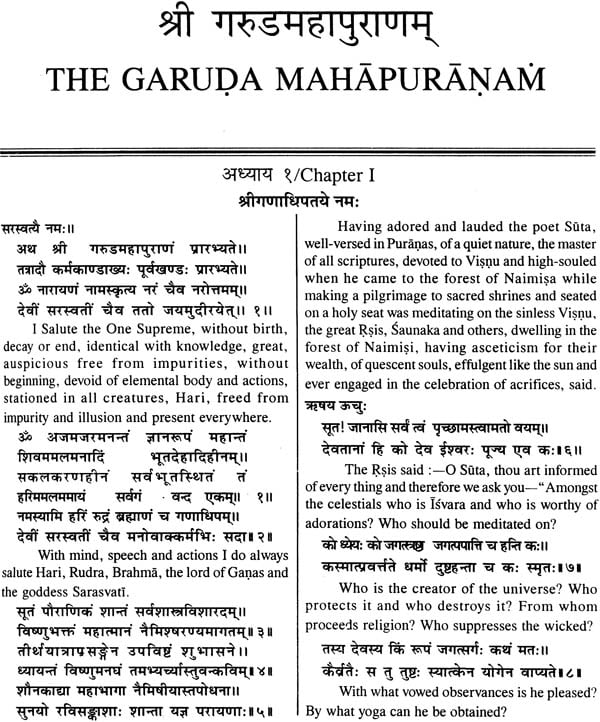
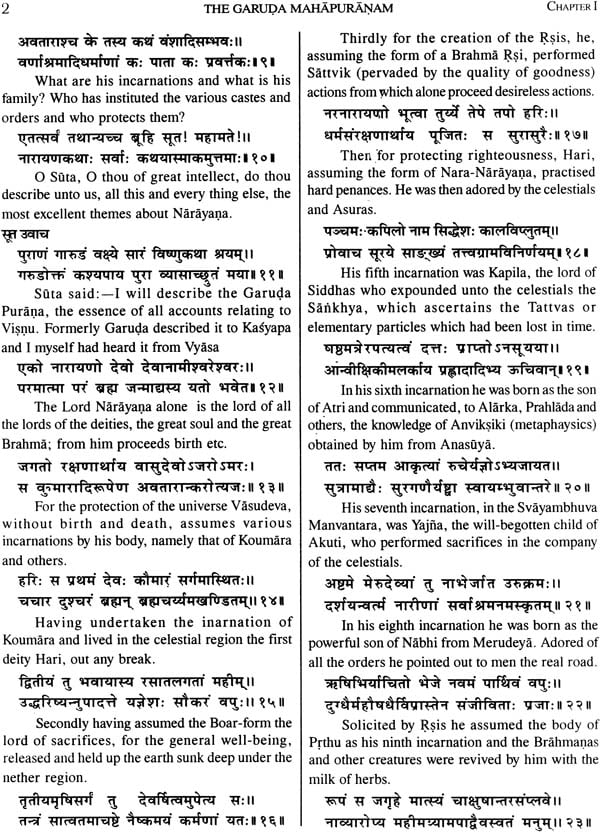
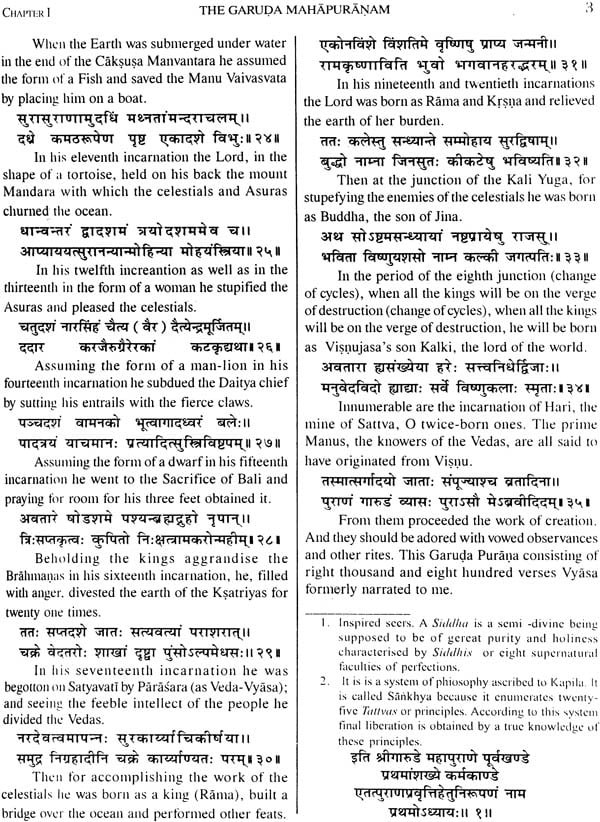
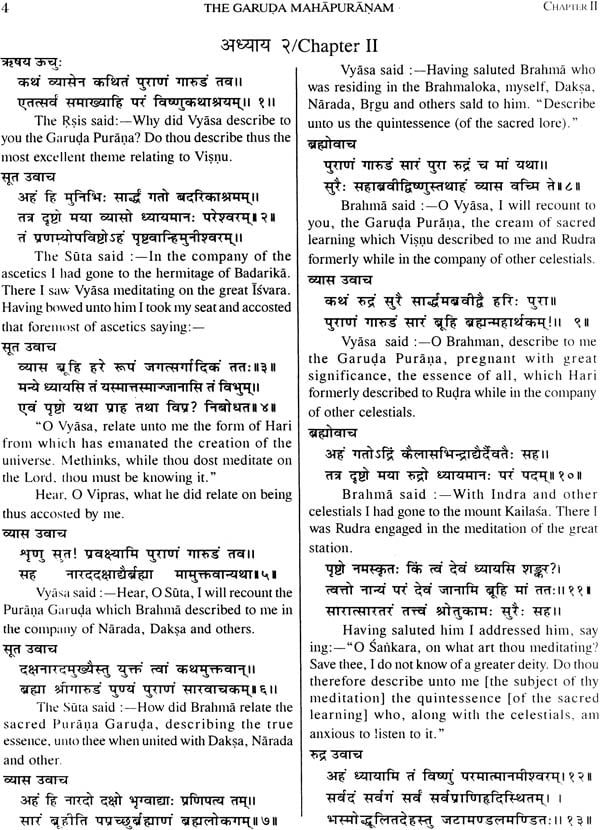
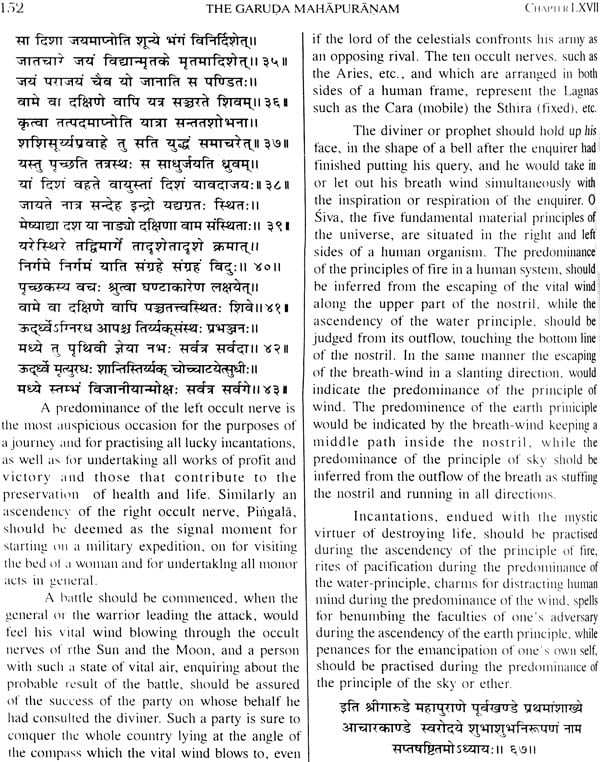
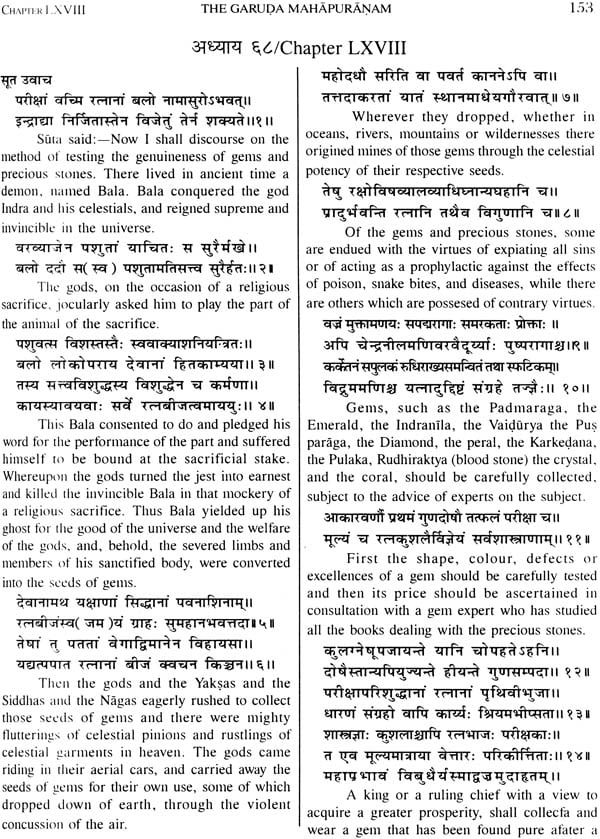
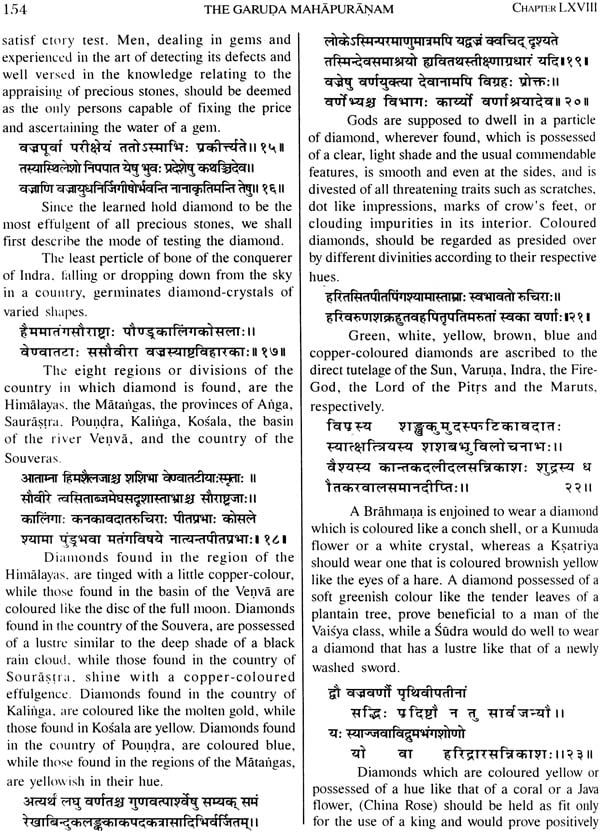
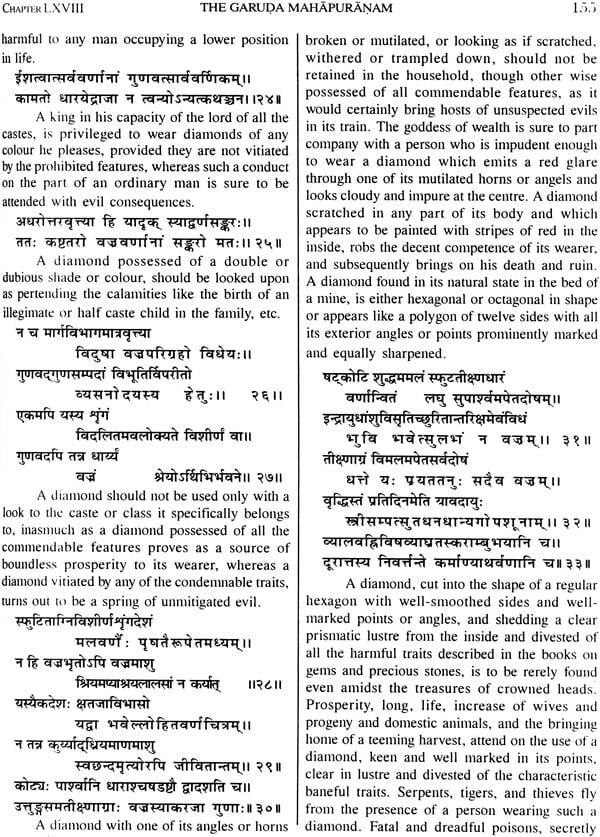
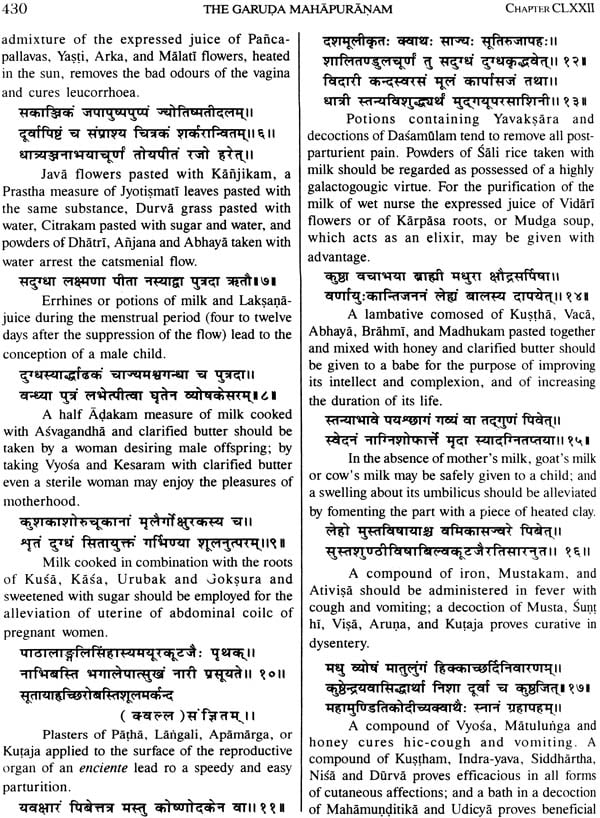
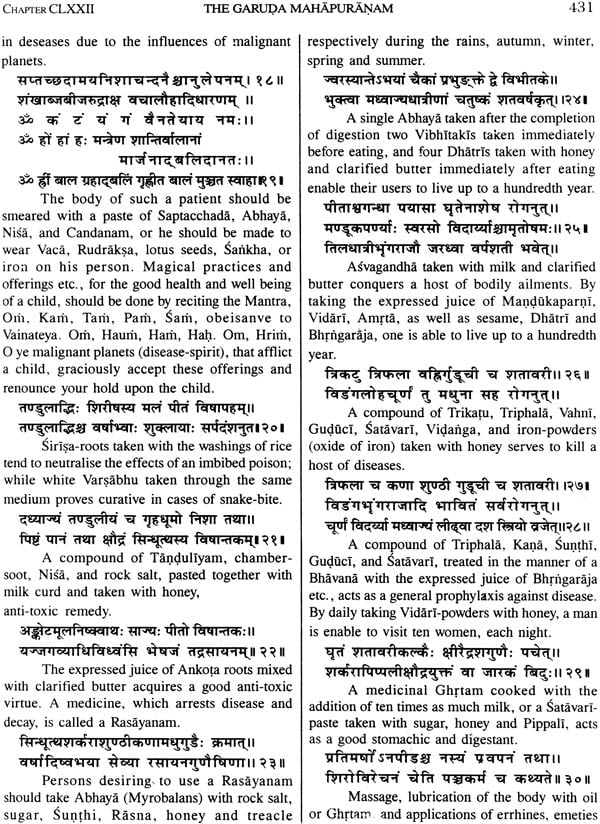
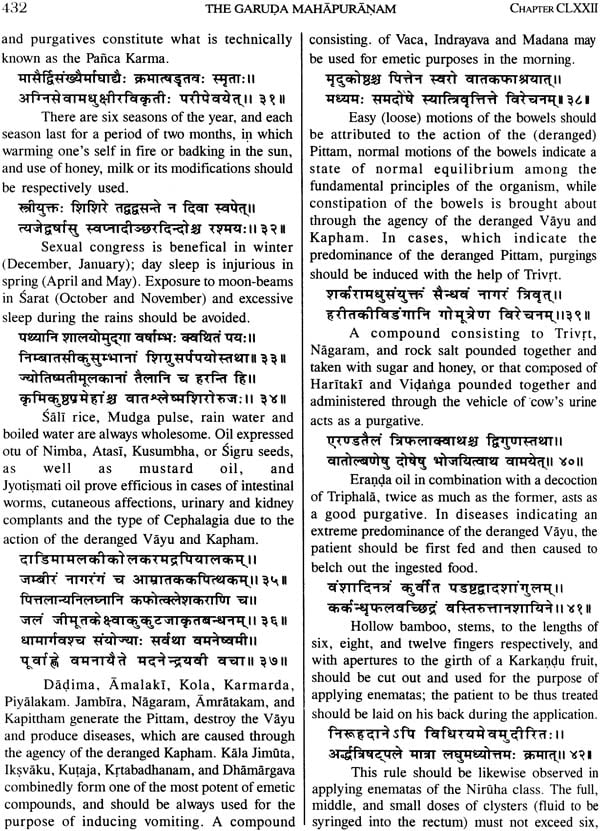
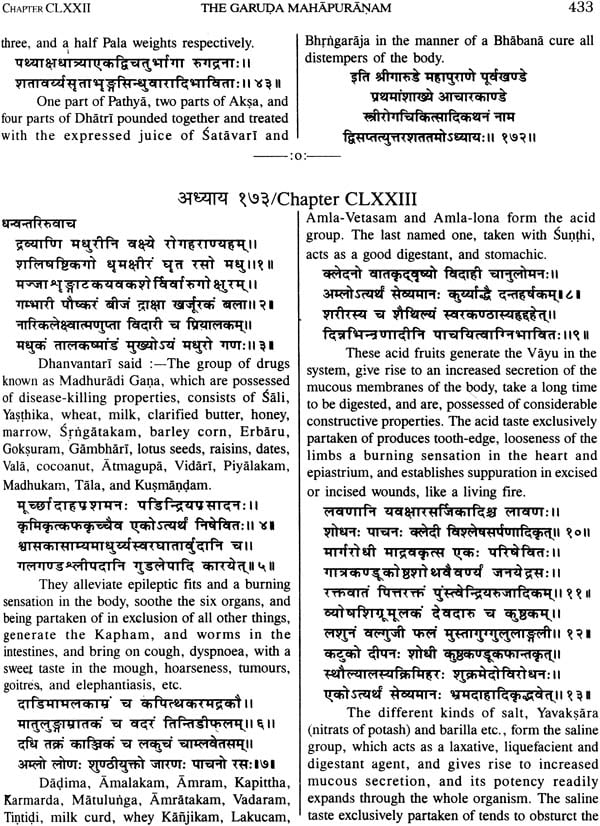
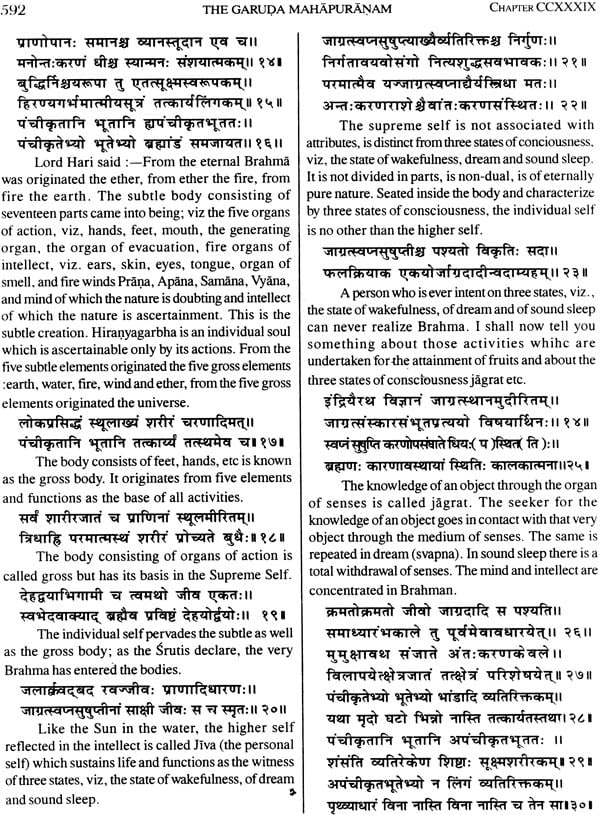
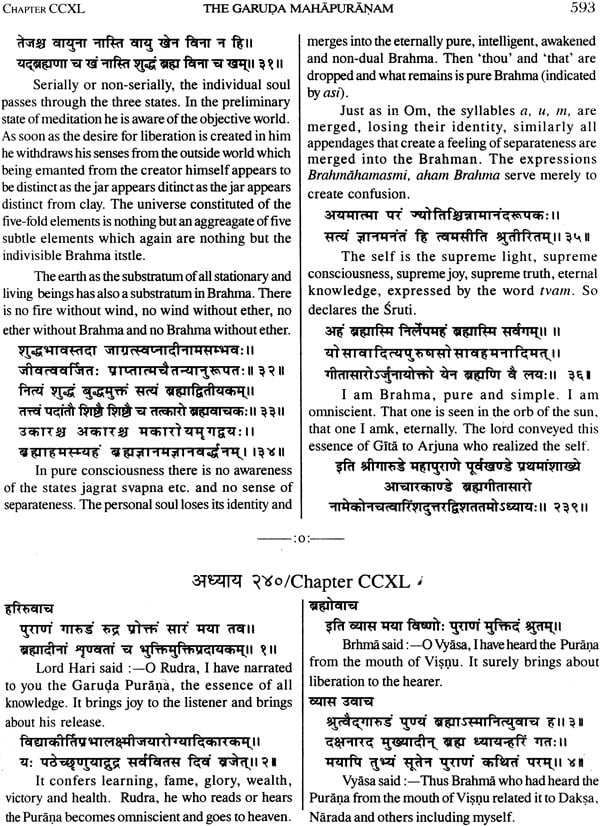
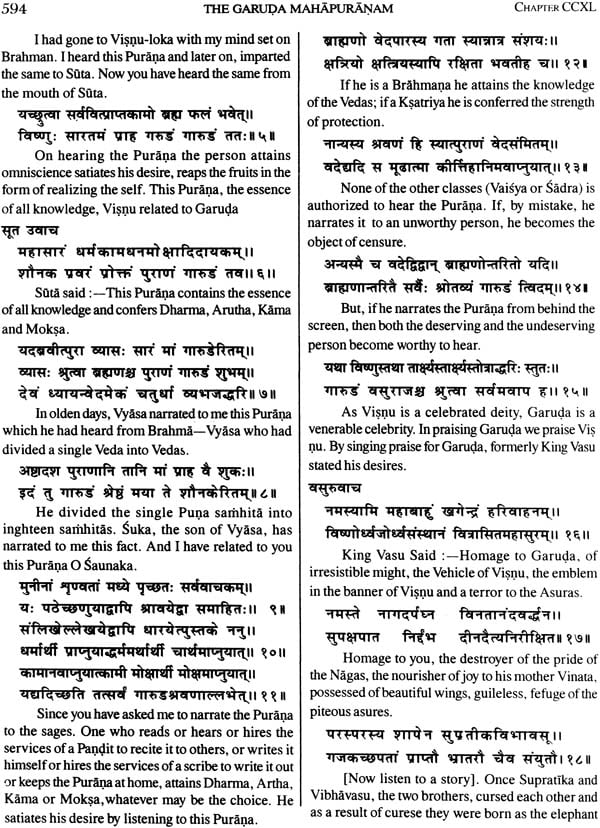
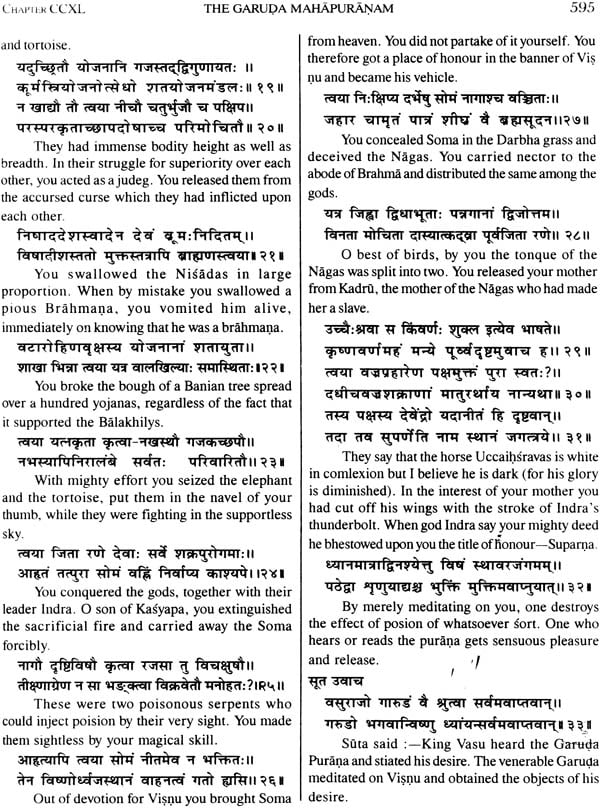
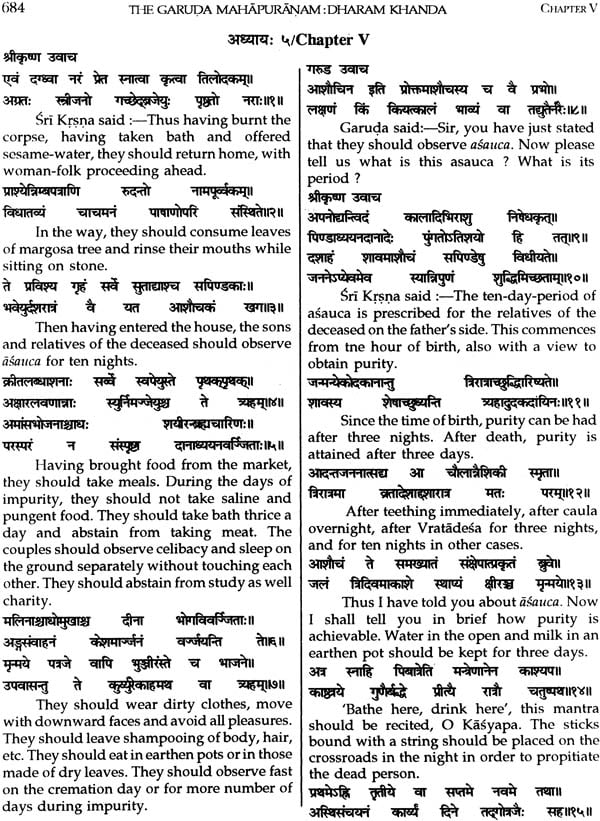
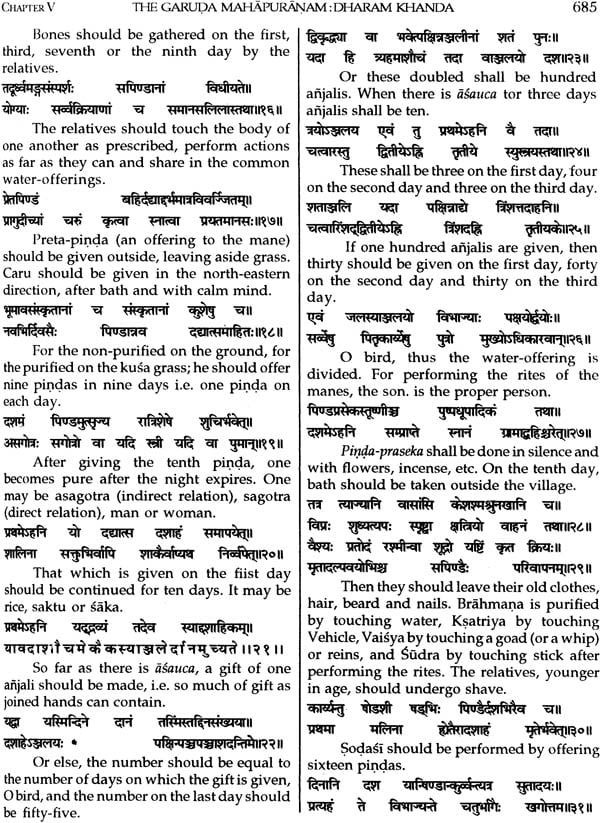
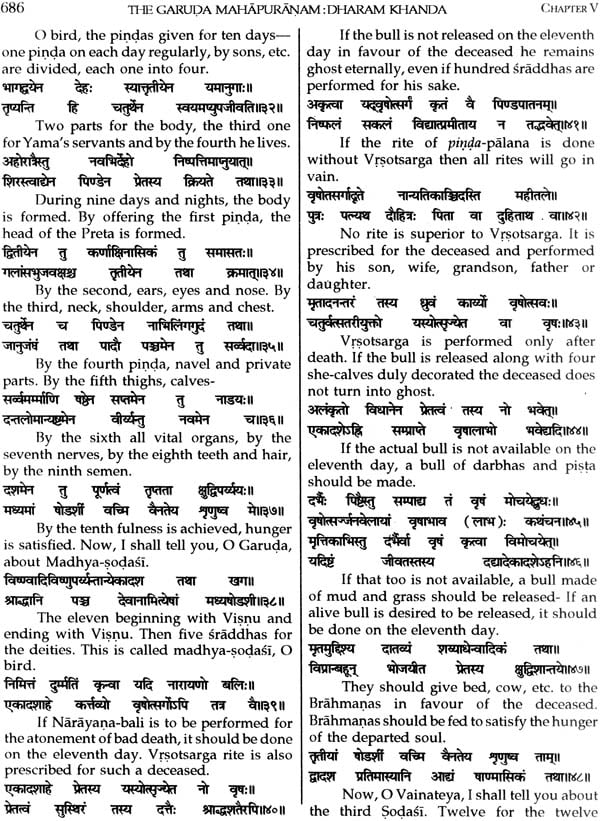
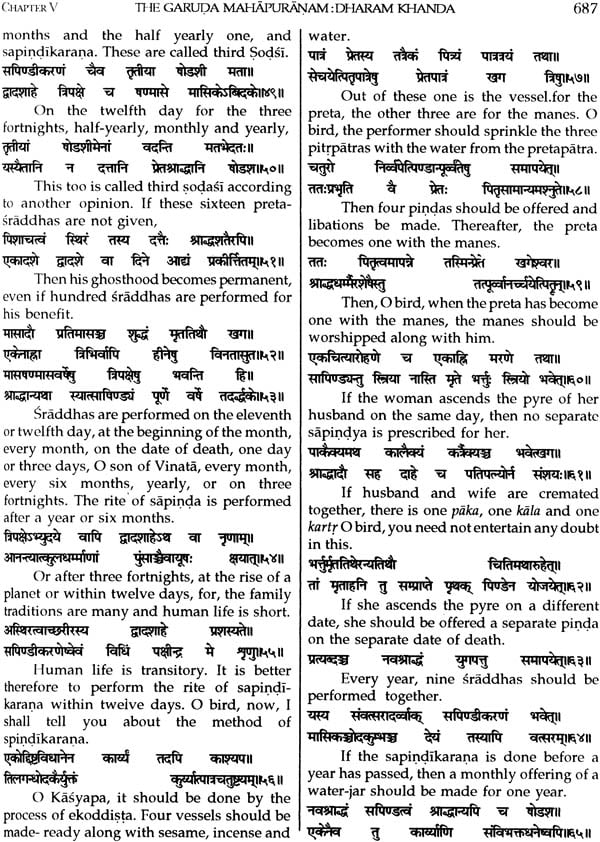
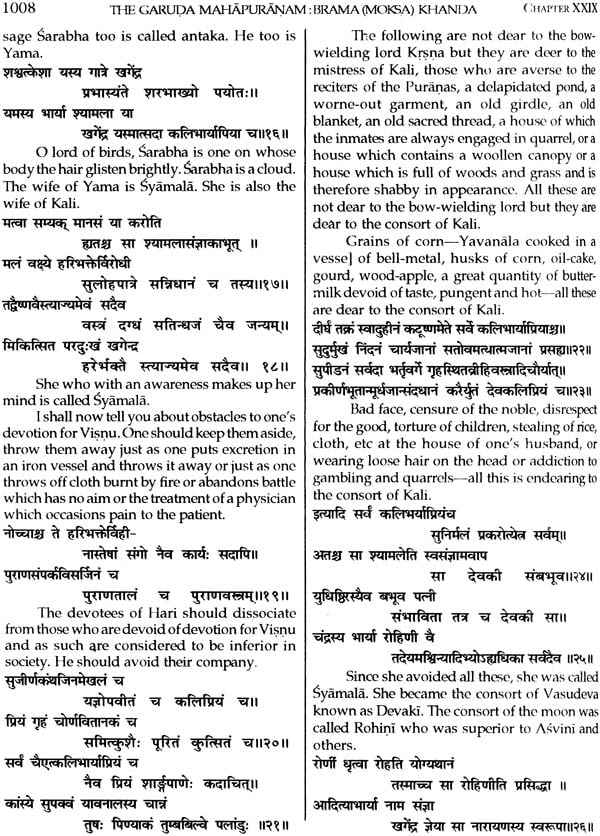
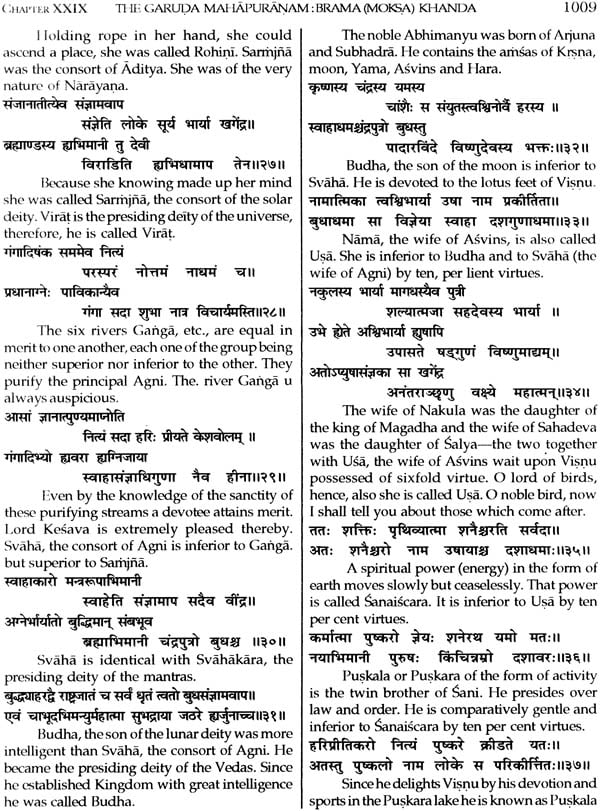
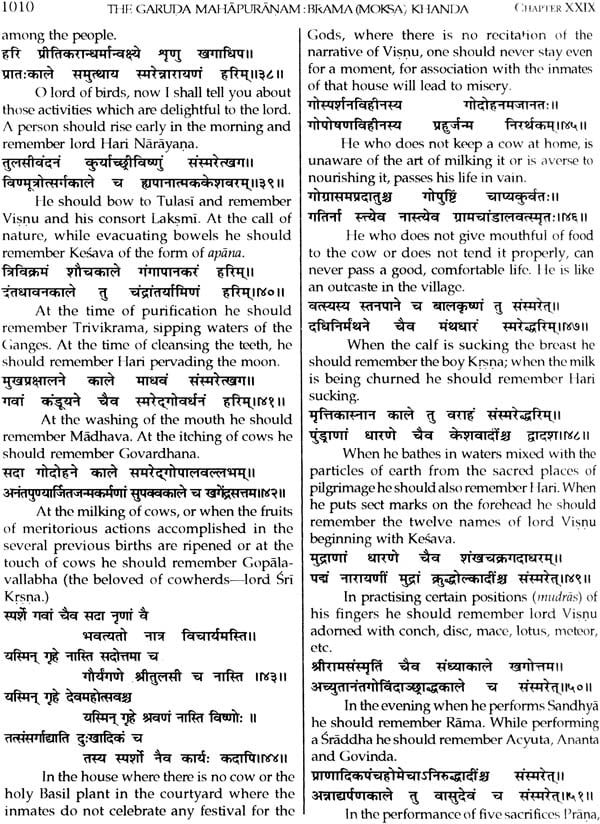
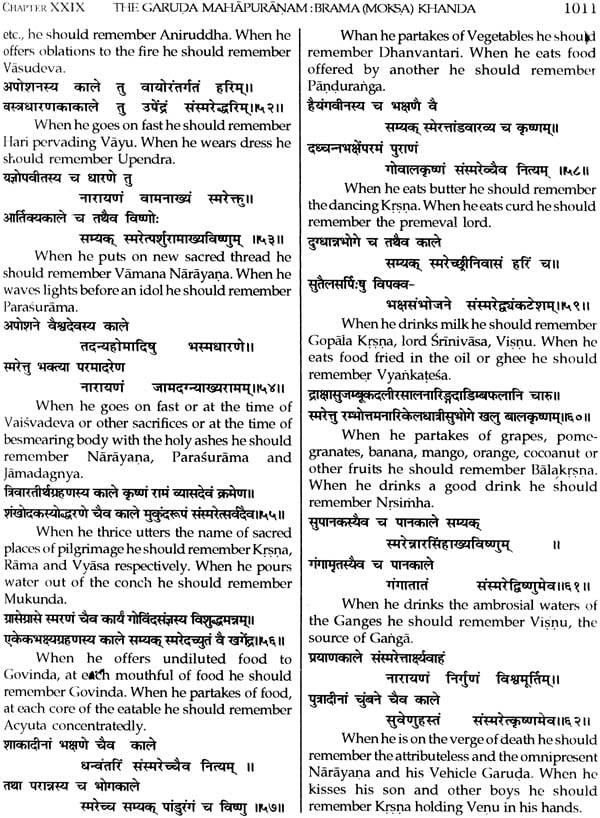
Delivery and Shipping Policy
- INTERNATIONAL SHIPPING
- Rs.1000-1100/kg
- ESTD. Delivery Time: 2-3 weeks (depending on location)
- Bubble Wrapped with Extra Padding
- NATIONAL SHIPPING
- NCR: Rs. 30/half kg
- Standard: Rs. 80/half kg
- Express shipments also available on Request
- ESTD. Delivery Time: Ranging from 1-4 days up to 7 business days (Depending on your choice of Delivery)
- TRACKING
- All orders; national or international, will be provided with a Tracking ID to check the status of their respective orders
- Depending on the Shipping Service, Tracking ID may be used on their respective tracking portals
Frequently Asked Questions (FAQs)
Domestic Shipping: 3-4 Days (after shipping)
International Shipping: 1-2 weeks (based on your location)
You will receive an email once your order has been shipped or you can email us if you didn't receive tracking details (info@mlbd.co.in)
Every book that we sell is the latest edition except all the rare books
Yes, we do provide free shipping, only on domestic orders (within India) above Rs.1500


















